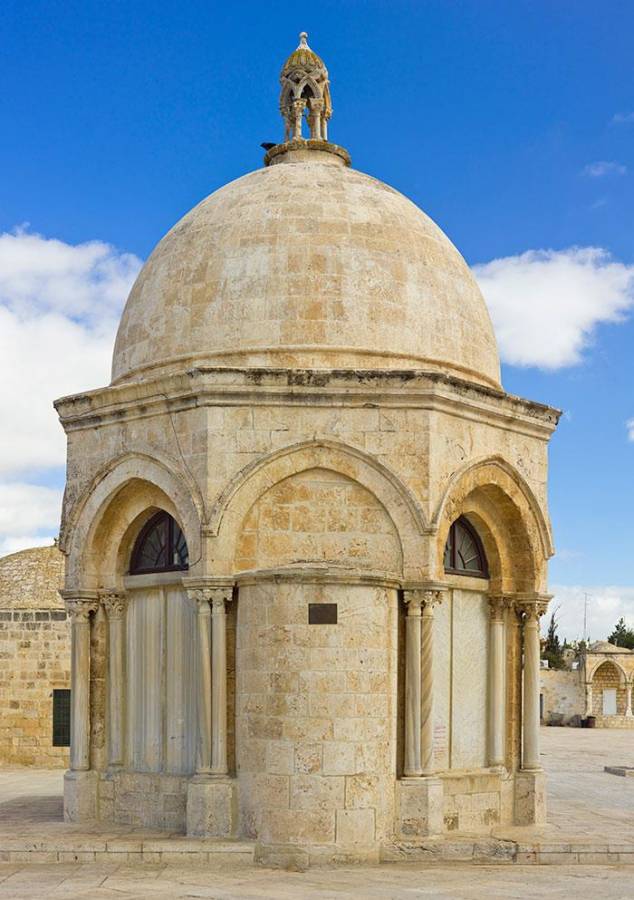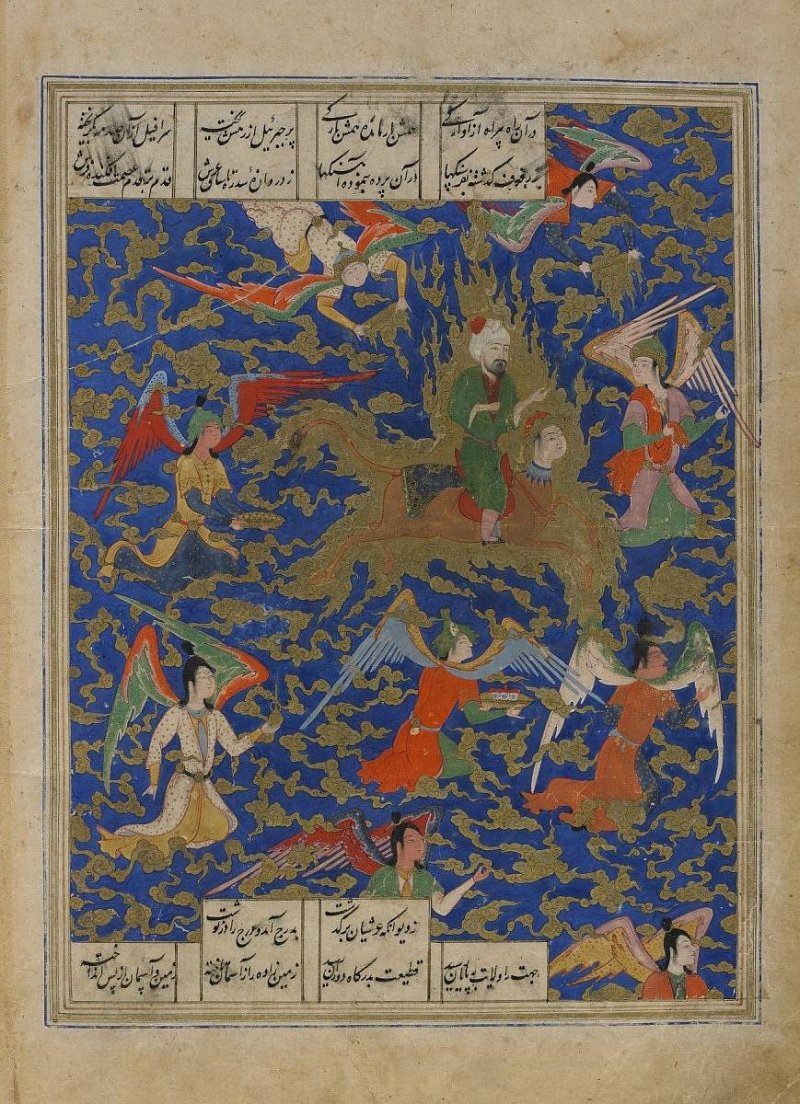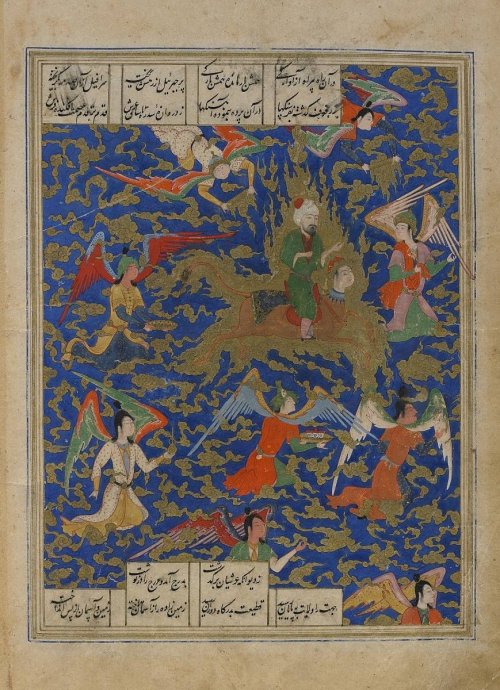The occasion of the Isra and Mi'raj, or the Night Journey, is one that is distinctly revered by Muslims. Marking the journey of the Prophet Muhammad from Mecca to Jerusalem, and his subsequent ascension to heaven, it resulted in radical developments in the Islamic faith as we currently know it. The events of the Mi'raj are vital to comparative religious studies, as the story resembles events in other religions and ancient myths that Arabs of old were likely unaware of. How do the events of Mi'raj compare to the journey/ascension myths in other religions? The question of correspondence between religious fables is critical, bringing with it a new set of queries and implications worth discovering.
Isra: The Initiation of Islamic Rituals
According to Islamic traditions, the Prophet Muhammad was taken from Mecca to Jerusalem in what then became known as Isra. The story begins with him falling asleep, when three angels, including the archangel Gabriel, open his stomach, cleansing him from jealousy and hatred, and filling his heart with faith and wisdom. Gabriel then takes him to the heavenly steed named Buraq, to fly him to heaven.

The Dome of the Ascension in Jerusalem
Subsequently, Muhammad, accompanied by Gabriel, ascends through the various levels of heaven. At each level, the prophet meets a different prophet or one of the righteous followers, until he reaches Sidrat al-Muntahā, which is a lote tree that marks the end of the seventh heaven, the boundary beyond which none of God's creation can pass. There, God imposed the five daily prayers on all Muslims. Some hadiths provide additional details to the story, including that the prophet, on his journey, saw scenes from hell, where people were being tormented by the devil. He also saw heaven and its inhabitants, as well as their eternal bliss.
The Zoroastrian Mi'raj and Zoroaster's Ascention
The stories of Mi'raj in the ancient religions begin with Zoroastrianism. An ancient Persian book brings us the story of Arda Viraf, who was chosen to ascend to heaven due to his righteousness, to be shown the other world and preach about it to the faithful. The Zoroastrian priests prayed over him until he slept for an entire year. Some translations depict his soul as having been temporarily separated from his body. His journey begins with his soul traveling to the next world. Crossing the Chinvat Bridge, or the Bridge of the Requiter (in Zoroastrianism, this is the bridge that separates the living from the dead). He is then led by the divinity Sraosha and the angel Adar through the "star track", "moon track", and "sun track" – places outside the realm of heaven, reserved for the virtuous who have, nonetheless, failed to conform to the rules of Zoroastrianism. In heaven, Viraf meets Ahura Mazda, the creator and sole God in Zoroastrianism, who shows him the souls of the blessed (ahlav). Each person is described as living an idealized version of the life he or she lived on earth, as a warrior, farmer, shepherd, or otherwise. Viraf also learns that faith and virtue materialize in the shape of a beautiful woman, while bad deeds come in the shape of an ugly old maid. With his guides, Viraf then descends into hell to be shown the sufferings of the wicked. Having completed his visionary journey, Viraf is told by Ahura Mazda that the Zoroastrian faith is the only proper and true way of life, and that it should be preserved, both through prosperity and adversity. Ahura Mazda asks Viraf to serve as his messenger, passing what he saw to the people, and calling on them to worship him. Zoroastrianism also includes another ascension story, namely that of Zoroaster himself, where it narrates that he obtained permission from God to ascend to heaven and roam in hell, where he met the god of the evil, Ahriman. The Zoroastrian Journey is one of the first stories of prophets ascending to the sky. Zoroastrianism emerged between the years 6000 and 600 BCE, and spread in Iran for the next 100 years. Yet, the story of Viraf is not the only thing that raises questions about the relationship between Islam and Zoroastrianism. One of the most striking similarities between the two religions is that Zoroastrianism demands that its followers perform their prayers five times a day, at times associated with the movement of the sun: at dawn, at noon, in the afternoon, a at sunset, and at nightfall. Moreover, Zoroastrians also used to perform wuḍū' (ablutions) before prayer. A bell would sound from the temple, calling people to prayer, much in the way that Muslims are called to prayer. In their prayers, the Zoroastrians would pray facing the fire, as a symbol of the god, in the same manner as Muslims praying toward Mecca. Similarly, in Zoroastrianism, it is said that people will be resurrected on the Day of Judgment, and their deeds will be weighed. Those whose good deeds are heavier are spared the torment. Subsequently, it is said that Ahura Mazda will order his followers to head to a bridge crossing over hell. Believers will simply pass over it as it expands with every step, while the non-believers will suffer as they try to cross the path, which to them is as thin as a hair and as sharp as a sword- they will fail to cross and dwell in hell. According to the book Zoroaster and Zoroastrianism by Shafi'at al-Mahi Ahmad, a researcher at the Department of Islamic Studies at the King Saud University, Ahura Mazda is described by Zoroaster as the one God, who did not give birth and was not begotten, the infinite light, the mover of the world and the owner of all things. He is confined neither to place nor time, and is omniscient. These are all attributes of God in the Islamic faith as we know it today.
Etana: The Holy Ascension of the Babylonians
Along with Zoroastrianism, the events of the Islamic Mi'raj bear a resemblance to the myth of the Babylonian King Etana, as told by some archaeological tablets, according to the Encyclopaedia Britannica. The myth begins at a time when it was said that there were no gods on earth, and so the gods decided to choose one. They selected Etana, who ruled his people well but was desperate to have a child. The great king was worried about dying without leaving an heir to the throne. In the detailed version of the legend, there is a tree with an eagle's nest atop of it, and a serpent at the base. Both the serpent and eagle have promised Utu (the sun god) to behave well toward one another, and to share food between their children. But one day, the eagle eats the serpent's children. The serpent comes back and weeps. Utu tells the serpent to hide inside of the stomach of a dead bull. When the eagle goes down to eat the bull, the serpent captures the eagle and throws it into a pit to die of hunger and thirst. Utu sends a man, Etana, to help the eagle, he saves the eagle, but also asks the bird to find the plant of birth, in order to father a son. We do not know the exact details of Etana's trip, since several parts of the tablet were damaged. Yet, the intact parts recount that the eagle takes Etana up to the heaven of the god Anu, but Etana panics while in the air and goes back to the ground. He makes another attempt, and finds the plant of birth, which allows him to father a son, Balih. Historians believe that the Etana mentioned in the story is the same King Etana who ruled the city of Kish in southern Mesopotamia, sometime in the first half of the third millennium BCE. In addition to being one of the first stories to mention the ascension to heaven in human history, it is also one of the first stories to show the longing of humans for an heir bearing their name.
Elijah: The Jewish Ascension to Heaven
The story of Elijah the prophet, the good man who lived fighting idolatry, shared many elements with the Mi'raj. In the name of God and faith, he struggled against the unjust kings and the successive attempts to kill him, aided by divine intervention and miracles. During his last days on earth, Elijah accompanied his disciple and his spiritual son Elisha on their way to Jordan. They came across a body of water, so Elijah lifted up his garment and struck the ground with it, splitting the water and paving a safe passage. As they moved forward, a ship of fire and knights came and took Elijah to heaven. His garment was left with Elisha. The Old Testament also mentions the story of Enoch, another good man who lived in the covenant of the Lord until he was ascended to live in heaven. In the Book of Genesis, it is said that: "Enoch walked with God; and he was not, for God took him." In the Epistle to the Hebrews of the New Testament, it is said that: "By faith, Enoch was taken up so that he did not see death. He could not be found because God had taken him away. For before he was taken, he was commended as one who pleased God." It is prophesied that he will return near the end of time to witness the coming of the Antichrist, and fight him alongside Elijah until they are both killed.
Islamic Versions of the Isra and Mi'raj
Despite its unique spiritual significance in the Islamic faith, the events of Isra and Mi'raj has been the subject of controversy and disagreement among jurists. The emergence of a controversy is renewed every year, based on various considerations. The details of the journey mentioned in the Quranic verses are few compared to the many Hadith (prophetic traditions) mentioned by Ibn Abbas and the Prophet Muhammad. These Hadith, however, contain details, such as the wings of Buraq, and the point in which Gabriel asks Muhammad to choose between a cup of wine and a cup of milk, that are firmly held by many, while rejected by others, most notably the Islamic thinker Muhammad Shahrour, one of the proponents of strict adherence to the Quran. He suggested that these Hadith should be taken with a grain of salt, noting that they likely feature embellishments that were added to the story for narrative value, noting that they were Jewish myths that infiltrated into Islamic culture.
The Isra and Mi'raj as Two Separate Events
Some commentators suggest that the events of Isra and Mi'raj were historically separate, and that each took place at a distinct time. They infer that the Quran mentioned the details of the Isra (journey) in the first verses of the sura (or Quranic chapter) of the same name, while the Mi'raj (ascension) as only mentioned in the hadiths attributed to the prophet. Yet, others point that verses in Surat al-Najm mention the details of the Mi'raj, based on which, they believe the story to be true, and that Muhammad actually ascended to where he met God.
Celebrating the Night Journey
A large segment of Muslims believe that Islam celebrates only two feasts: Eid al-Fitr and Eid al-Adha. Many Salafis believe the celebration of Isra and Mi'raj to be a heresy since, they argue, the Prophet Muhammad and his companions never celebrated. This view is contradicted by Waleed Matar, Professor of Exegesis and Quranic Studies at Al-Azhar University in Cairo, who tells Raseef22 that celebrating the night of Isra and Mi'raj is obligatory to the Muslims. He explains that the event is very important in Islam, and should be celebrated. He adds that, though the journey of Isra and M'raj was not proven to have occurred in the month of Rajab, Muslims unanimously agreed to this date. "It represents a great connection between heaven and earth," he notes. With striking similarities with other traditions, and numerous intellectual debates, the journey of Isra and Mi'raj remains a critical event that reveals many aspects of the Islamic culture and sheds special light on its intricacies.
Raseef22 is a not for profit entity. Our focus is on quality journalism. Every contribution to the NasRaseef membership goes directly towards journalism production. We stand independent, not accepting corporate sponsorships, sponsored content or political funding.
Support our mission to keep Raseef22 available to all readers by clicking here!
Interested in writing with us? Check our pitch process here!




